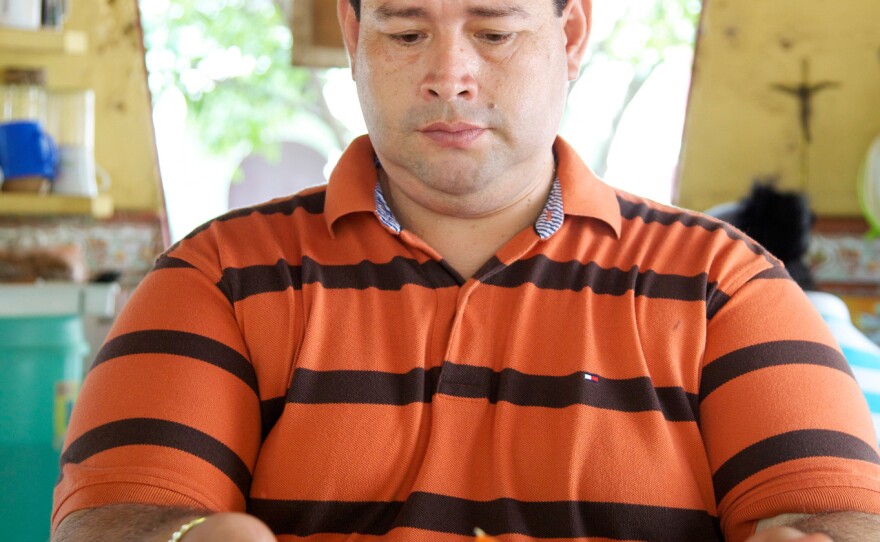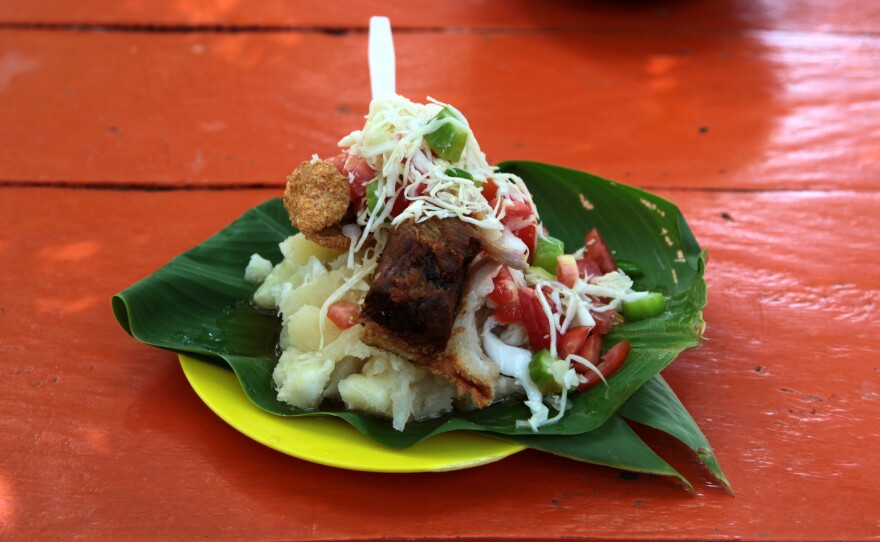
Everyone I met in Nicaragua wanted to know two things. Where was I from and had I tried vigorón?
It was the taxi driver who dropped me off at the airport at the end of my first trip to the country who was most disappointed that I had not managed to try Nicaragua's national dish. And I had no good excuse for the oversight: Vigorón is ubiquitous on menus around the country, especially in the city of Granada, where I'd been. The hearty dish of starch, meat and vegetables adorned with condiments can be ordered for breakfast, lunch or dinner.
Back home in New York City, I went in pursuit of vigorón, but I couldn't find it on any menus. And it began to sink in that if I wanted a genuine introduction to vigorón, I'd have to return to Granada, Nicaragua, where it all started. A year later, I was back. Although I was ostensibly there to research a story about the Chinese plan to build a new canal in Nicaragua, admittedly one of my chief reasons for returning was to eat vigorón.
My first priority was to seek out Francisco Javier Gomez Torres, of El Gordito, the food kiosk he's helmed for nearly 30 years. Everyone I talked to, including Nicaraguan chef and TV personality Hazel Cuadra, seemed to agree that Gomez is a master of vigorón. He sells up to 300 plates of it a day, typically accompanied by a fresco de cacao (a cool chocolate drink), granma (a tea made of a local grass) or chicha (a fermented corn beverage).
Inside the kiosk's tiny kitchen, Gomez Torres shared his recipe and the story of the dish. The hearty meal started as a street food in the early 20th century and was named for its invigorating, stick-to-your ribs properties, he says. The combination of soft, starchy yucca; salty, rough pork cracklings; and tangy, cool slaw made with cabbage, onions, tomato, mimbre fruit (also known as mimbro), chile and vinegar offers a distinct interplay of textures and flavors. And it caught on quickly. Soon, vigorón was sold all over the city and the country, according to Gomez.
Though you can order fancy versions of vigorón at upscale restaurants, El Gordito is politely dismissive of chefs attempting to gild the lily. Why complicate a simple dish, he says, especially when so many locals happily eat vigorón off a plantain leaf for about $2, using their hands?
You should only eat vigorón with your hands, says María del Mar Sacasa, a Nicaragua-born, New York-based food stylist and cookbook author. "I call it the three-finger-fork," she says. "You use your thumb, index finger and middle finger to scoop it up." Chef Hazel Cuadra concurs. "Eating vigorón with your hands is a required skill in order to achieve the just-right amount of three items in one handful that constitute the perfect bite," she says.
Sacasa points out another of vigorón's distinctions: "Everyone eats vigorón: all classes, all creeds." The democratic dish survived the notoriously cruel Somoza dictatorship and then a civil war — both just a few decades ago. The war exacerbated social problems and economic disparity, and caused painful fractures within families. The recovery from the Somoza era wasn't an easy one, but love of a shared dish helped in its own way.
"In a country with social and economic classes divided so drastically," Cuadra says, "vigorón remains one of those dishes that no matter your status you crave since you are born. On any given weekend you can see in the Central Park of Granada, the richest and the poorest of the city ordering vigorón side by side as well as eating [together] on the benches."
But perhaps there's no busier time of year than September 15, when the country pauses to celebrate its independence. As the prospect of the canal fills the air with a feeling of imminent change, one thing that's reassuringly stable for Nicaraguans is vigorón. "It's humble and local, but it encompasses all the elements of flavor balance and texture that even some Michelin-starred dishes fail at," says Sacasa.
Recipe: Chef Alex Dunn's Vigorón
Vigorón relies on staple ingredients from the Latin kitchen — yucca, pork and vinegar.
El Gordito insists that true vigorón must include mimbre (or mimbro) a small, tangy fruit and should also be served atop the large leaf of a plant harvested from the banks of Lake Nicaragua.
Chef Alex Dunn of Jicaro Ecolodge is a bit more flexible with his recipe, making concessions for American home cooks who will be unlikely to find either. Omit the mimbre, he says, and substitute a banana leaf, available in the produce section of many grocery stores, for the canvas upon which vigorón is built.
Serves 6
Ingredients:
2 pounds yucca, peeled (fresh or frozen)
3 cups green cabbage, shredded fine
4 plum tomatoes, diced
1 white onion
2 tablespoons white vinegar
2 tablespoons fresh lime juice
1.5 teaspoon salt
Oil for frying
1 cup diced pork belly (Chef Dunn recommends large-dice pork belly dredged in flour for a crisper, more pleasing crackle.)
INSTRUCTIONS
Bring the yucca to boil in a large pot with 1 teaspoon of salt; once you've got a roiling boil, reduce heat and continue boiling on medium until the yucca is fork-tender (about 20 minutes). Drain and cool. Then, use your fingers or a knife to peel the thick, rope-like vein from the yucca. Set aside.
Bring water to boil in a large pot and immerse the cabbage to blanch for one minute. Drain the cabbage and set aside.
Mix the tomato, onion, vinegar, remaining salt, and lime in a bowl before adding the cabbage. Toss the ingredients well. This is the slaw.
Fry pork belly in oil until dark and crispy.
Place a clean banana leaf on a plate. Arrange yucca atop leaf (Chef Dunn leaves his yucca in finger-sized chunks; El Gordito shreds his yucca into threads; you can do either). Place a handful of pork cracklings on the yucca and finish with a generous helping of slaw, crowning the dish.
Serve immediately.
Julie Schwietert Collazo is a bilingual writer and journalist who covers Latin America and Latino communities in the U.S. for a wide variety of publications, including Foreign Policy, National Geographic Traveler and The Guardian.
Copyright 2015 NPR. To see more, visit http://www.npr.org/.






